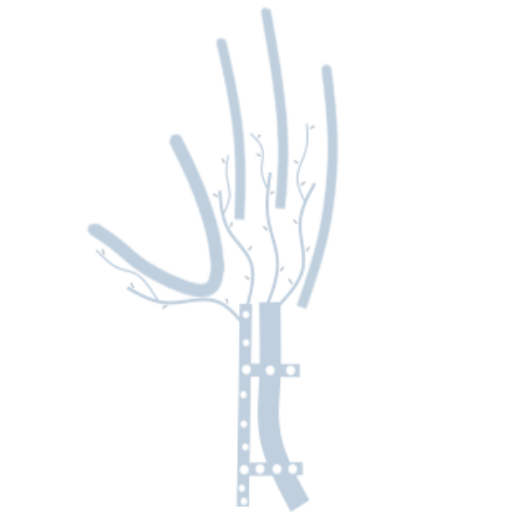A mini-invasive tenolysis of the flexor tendons following hand fractures: case series.
Fuente
https://www.ncbi.nlm.nih.gov/pubmed/28766275
https://link.springer.com/article/10.1007%2Fs12306-017-0493-9
De:
Leti Acciaro A1, Lando M2, Russomando A2, Colzani G3.
Musculoskelet Surg. 2017 Aug 1. doi: 10.1007/s12306-017-0493-9. [Epub ahead of print]
Todos los derechos reservados para:
Copyright information
Abstract
INTRODUCTION:
The treatment of the flexor tendon adhesions following phalanx and metacarpal fractures, in closed or open injuries, is a great challenge for the hand surgeon. The outcomes are often poor, because of the severity of the lesion and the aggressiveness of the surgical procedure of the secondary tenolysis.
MATERIALS AND METHODS:
The authors describe the technical findings and the results of a new mini-invasive tenolysis in order to treat the adhesions in zone 1 and 2 of the fingers, following phalangeal and metacarpal fractures. With an atraumatic Allis or Duval surgical forceps, the flexor tendons are separately and gently tracted making a twisting movement on themselves until the adhesions were torn and the tendons appeared released.
RESULTS:
The relevant outcomes achieved show this technique is very useful to treat tendon adhesions, without adding trauma and scare to the tendinous canal and surrounding soft tissues.
KEYWORDS:
Adhesion; Complications; Hand fracture; Mini-invasive; Tenolysis
Resumen
INTRODUCCIÓN:
El tratamiento de las adherencias del tendón flexor después de la falange y las fracturas metacarpianas, en lesiones cerradas o abiertas, es un gran desafío para el cirujano de la mano. Los resultados son a menudo pobres, debido a la gravedad de la lesión y la agresividad del procedimiento quirúrgico de la tenólisis secundaria.
MATERIALES Y MÉTODOS:
Los autores describen los hallazgos técnicos y los resultados de una nueva tenólisis mini invasiva para tratar las adherencias en las zonas 1 y 2 de los dedos, a raíz de fracturas falangianas y metacarpianas. Con una pinza quirúrgica atraumática de Allis o Duval, los tendones flexores se trazan por separado y suavemente haciendo un movimiento de torsión sobre sí mismos hasta que las adherencias se rompieron y los tendones aparecieron liberados.
RESULTADOS:
Los resultados relevantes obtenidos demuestran que esta técnica es muy útil para tratar las adherencias del tendón, sin agregar traumatismo y escaras al canal tendinoso y los tejidos blandos circundantes.
PALABRAS CLAVE:
Adhesión; Complicaciones; Fractura de la mano; Mini-invasivo; Tenólisis
- PMID: 28766275 DOI: 10.1007/s12306-017-0493-9

